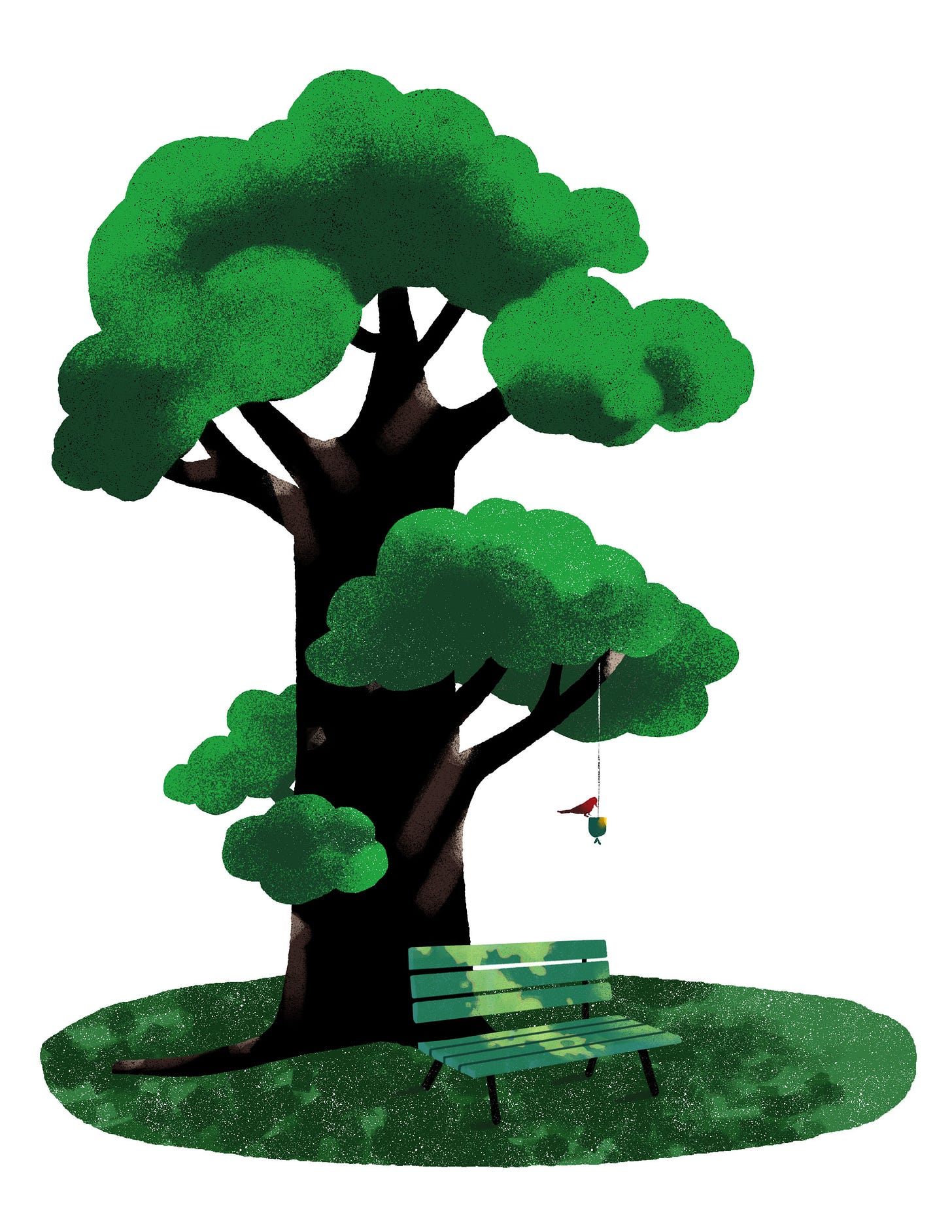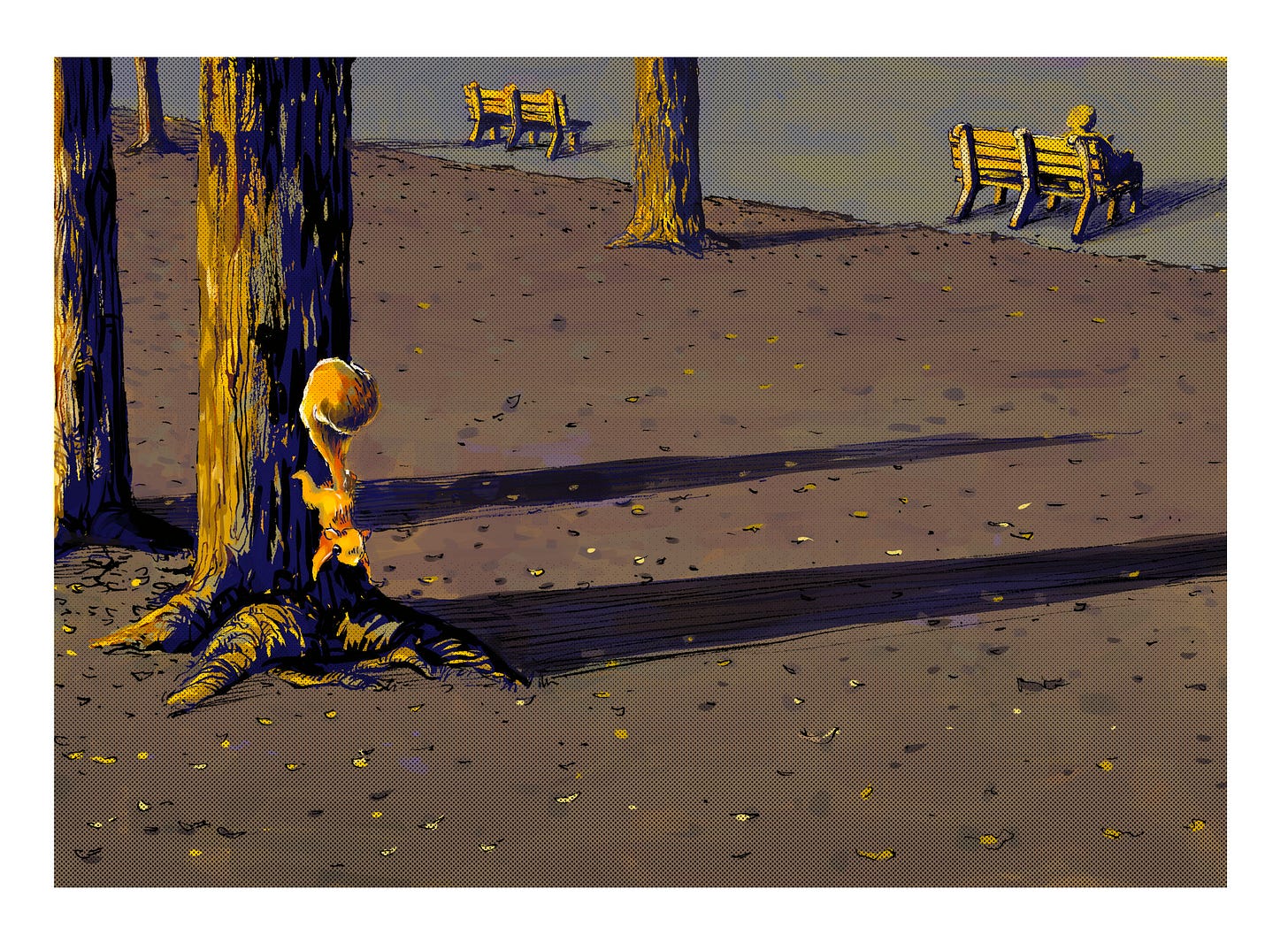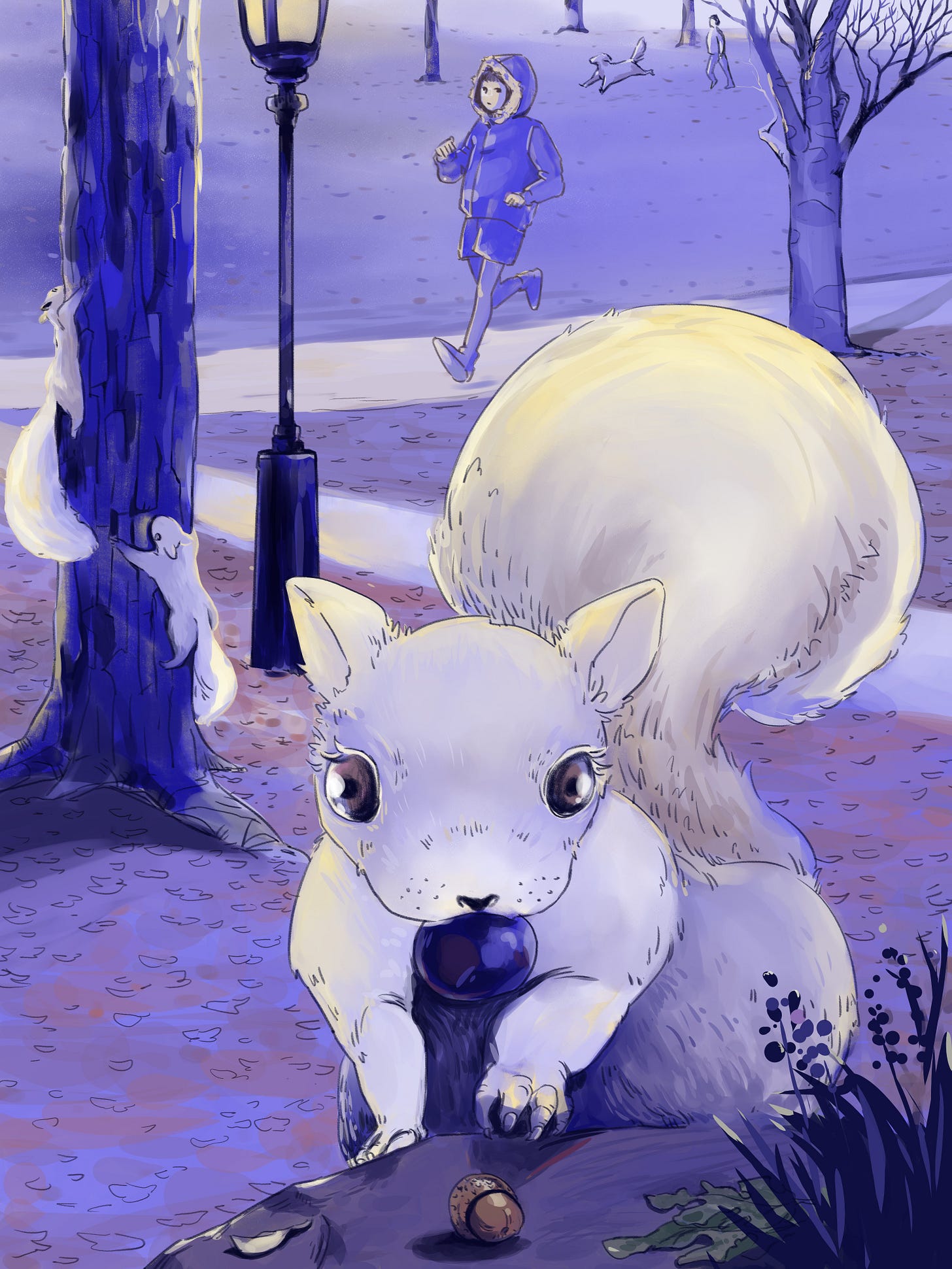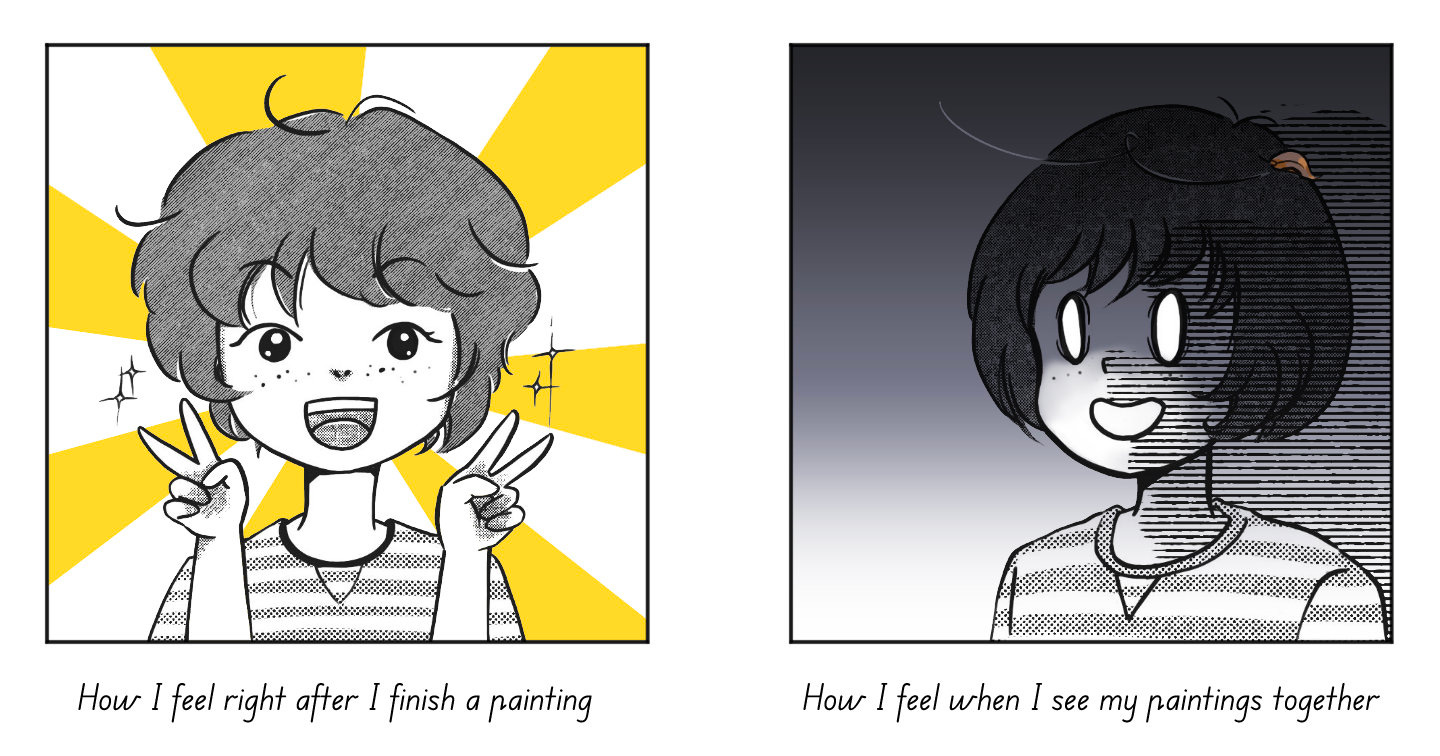In Search of a Style - Genre and Style
At its core, style is underpinned by a genre. When your audience thinks you've got bad taste, very much likely it's because you messed up your genre, and appealed to the wrong group.
From an art viewer’s perspective, the style of an artist consists of the artist’s preferred color palette, line-shape-form expression, and subject matter. That’s how we recognize Monet or Matis.
From the artist’s perspective, the style is developed as a set of low-level decisions made in advance so that the artist can focus on the content instead of the form. In Chinese ink painting, you start by following steps laid out by former masters on how to paint the bamboo, the orchid, the birds, and the mountains… so that when it’s time to compose a large complex picture, you’ve got building blocks ready at hand.
Neither of the understandings above helped me to get closer to finding my own style.
Here are three images I made last month, all depicting trees and animals in the park:
I was very happy with the image above. I thought, “okay, this is gonna be my style!”
Then a couple of days later, I ended up with something like this one below:
I liked this one too! In fact, I liked this one even more because the color palette and the textures are more sophisticated. I lost my vision of the first style, the chubby, picturebook-like image.
Then I set out to paint yet another park scene, trying to stick to the yellow-purple color scheme with trees and squirrels, and this happened:
I of course don’t hate my paintings. I think they each represent what I was able to produce to my best capability, but somehow they don’t look like they belong together.
It’s been like that for several years.
Then, most recently, what Seth Goldin said in The Practice salvaged me. Paraphrased here, he pointed out:
At its core, style is underpinned by a genre. When your audience thinks you've got bad taste, very much likely it's because you messed up your genre, and appealed to the wrong group.
Sure, as a creator we don’t want to be boxed into genre labels. We want to have the creative freedom to go beyond how the critics would label us. But in order to even have critics, we must let people know what kind of work we are producing, and for what kind of audience.
Understanding the genres of our chosen creative field is about understanding our audience. Ignore the genre, then we’ll be ignored.
The reason why my images swing widely in style, on one hand, is a symptom of the readily available digital image-making tools; on the other hand, and more poignant, is that I didn’t understand different genres of illustration.
Next week, let’s take inventory of the genres of illustration. Until next time~ peace!







